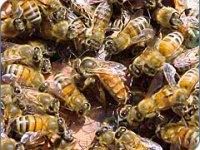Recently, I went to Montana with my family and some friends. We stayed in Ronan, a town south of Flathead Lake, and west of the Mission Mountains Wilderness. Right by the house where we were staying, there was a dried up stream-bed that led down to a river that was full of all sorts of small fish and bugs. One time when we were down there a dog came up to us and we played a game of fetch. The dog's name was Ellie, she was a black lab. Here's a picture I took of her.

Another dog, Stinky, was Ellie's friend and liked chasing cars and swimming. He was a golden lab. Ellie and Stinky followed us back to our cabin and we played fetch for at least three hours. At that time in summer, there were lots of forest fires, and the flames of the Ashley Lake forest fire were nearly visible at night. One day we went to the town of St. Ignatius, and saw the St. Ignatius Mission, a very large church with lots of really cool paintings on the walls and ceilings. Southwest of Ronan, there is the Ninepipe National Wildlife Refuge which is home to waterfowl, song birds, and even some birds of prey. In Polson, I went to the Miracle of America History Museum. It has historical artifacts, machines, and all sorts of interesting things. Outside, there is a helicopter you can climb into, and a bomber from the Korean war, a giant tugboat you can explore, and in back, there is the set up of an old wild west town in the early 1910's.
Resources: "Hidden Montana" and "Montana's Flathead Country."

Another dog, Stinky, was Ellie's friend and liked chasing cars and swimming. He was a golden lab. Ellie and Stinky followed us back to our cabin and we played fetch for at least three hours. At that time in summer, there were lots of forest fires, and the flames of the Ashley Lake forest fire were nearly visible at night. One day we went to the town of St. Ignatius, and saw the St. Ignatius Mission, a very large church with lots of really cool paintings on the walls and ceilings. Southwest of Ronan, there is the Ninepipe National Wildlife Refuge which is home to waterfowl, song birds, and even some birds of prey. In Polson, I went to the Miracle of America History Museum. It has historical artifacts, machines, and all sorts of interesting things. Outside, there is a helicopter you can climb into, and a bomber from the Korean war, a giant tugboat you can explore, and in back, there is the set up of an old wild west town in the early 1910's.
Resources: "Hidden Montana" and "Montana's Flathead Country."
TECHNORATI TAGS: MONTANA, VACATION, RONAN, ST. IGNATIUS, MISSION MOUNTAINS
 The scientist let them loose in the
The scientist let them loose in the 